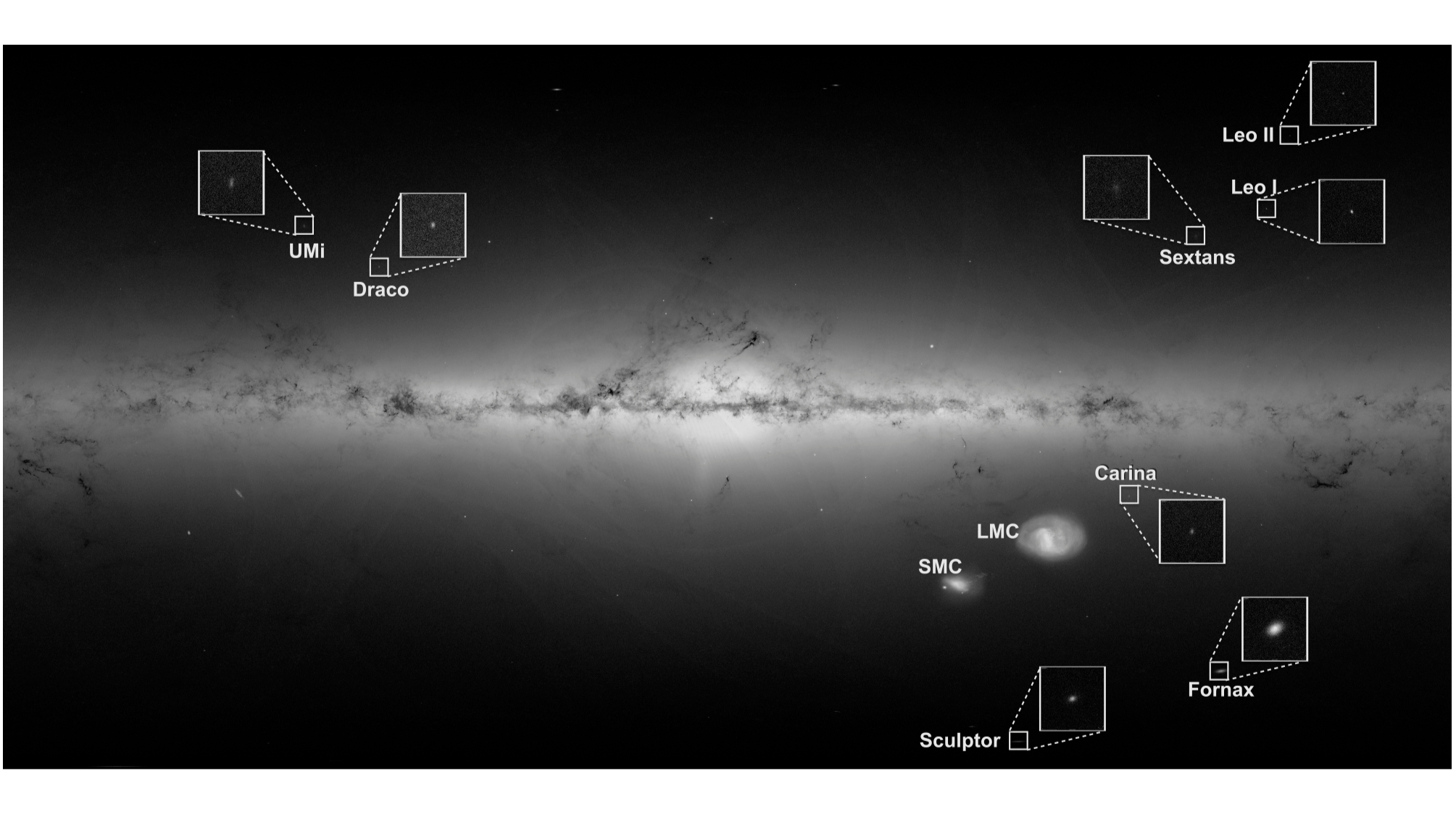Dark matter clue? Mysterious substance may be interacting with itself in nearby galaxy
The Milky Way satellite galaxy, named Crater II, may consist of self-interacting dark matter.

A galaxy floating alongside our own some 380,000 light-years from Earth could offer fresh clues in the 90-year-long quest to determine the nature of dark matter, the invisible glue that holds galaxies together.
The mysterious substance accounts for over 80% of the universe's mass but has yet to be directly detected.
Scientists say the satellite galaxy, named Crater II, may consist of self-interacting dark matter (SIDM), which is a hypothetical variety of dark matter whose particles are predicted to interact via a hitherto unknown force beyond gravity. This hypothesis has in recent years gathered attention as an alternative form of conventional "cold" dark matter.
"When we started this project, we roughly knew how SIDM would work, but had no idea how well it would work in explaining the observations of Crater II," study co-author Hai-Bo Yu, who is a professor of physics and astronomy at the University of California, Riverside, told Space.com.
"Our computer simulations of Crater II analogs show that the agreement between [self-interacting dark matter] predictions and Crater II observations is surprisingly good, and the required strength of the dark matter self-interaction is larger than we initially anticipated."
Related: Exotic 'Einstein ring' suggests that mysterious dark matter interacts with itself
Discovered in 2016 in images taken by the Very Large Telescope in Chile, the Crater II galaxy is the fourth largest satellite of the Milky Way — after the large and small magellanic clouds and the Sagittarius galaxy. If it were visible to the naked eye, it would appear twice as large as the full moon, according to New Scientist. Crater II hosts a few billion old stars, which are sprinkled across 6,500 light-years, rendering the "feeble giant" remarkably faint — almost 100,000 times dimmer than the Milky Way.
Breaking space news, the latest updates on rocket launches, skywatching events and more!
Despite multiple attempts over the years to simulate Crater II's properties, how the galaxy formed and maintains its relatively large size remains unclear. Astronomers know that Crater II evolves over eons under the gravitational influence of the Milky Way; our galaxy exerts a tidal force on it, which stretches its profile. Those tugs also influence its dark matter halo — a spherical, invisible structure surrounding Crater II — as well as the galaxy's stars.
"A useful analog is that the tidal force of the moon leads to ocean tides on the Earth," said Yu. "For the satellites of the Milky Way, the tidal force can strip away stars and dark matter, reducing the mass of the satellites over time."
However, recent measurements of the galaxy's orbit around the Milky Way suggest those interactions are too weak to explain Crater II's dark matter densities — that is, if dark matter is made of "cold," collisionless particles, as is predicted by the prevailing Lambda-CDM (LCDM or CDM) model of cosmology. Prolonged tidal interactions with the Milky Way should also have shrunk Crater II more than observed, scientists say.
Based on measurements of Crater II's orbit, Yu and other team members simulated the mass loss of stars and dark matter particles due to the Milky Way's tidal force. The team found that the galaxy's observed properties can be explained by dark matter particles that interact with each other.
Crucially, Crater II doesn't sport a high-density "cusp" of dark matter toward its center as predicted by the LCDM model. On the other hand, if dark matter were indeed made of self-interacting particles, collisions in the inner regions of a dark matter halo can transfer energy among the particles "and tend to make them carry the same amount of energy," said Yu. That would sort of even out Crater II's halo and explain its lack of a central cusp, according to the team's study, which was published this month in The Astrophysical Journal Letters.
SIDM also predicts that a galaxy will expand within the dark matter halo, which would explain Crater II's large size better than the CDM models, the researchers say.
"Our work shows that SIDM can well explain the unusual properties of Crater II, which challenges CDM," said Yu. "To further confirm whether dark matter indeed carries a new force, we hope to see more galaxies like Crater II."

Sharmila Kuthunur is an independent space journalist based in Bengaluru, India. Her work has also appeared in Scientific American, Science, Astronomy and Live Science, among other publications. She holds a master's degree in journalism from Northeastern University in Boston.
